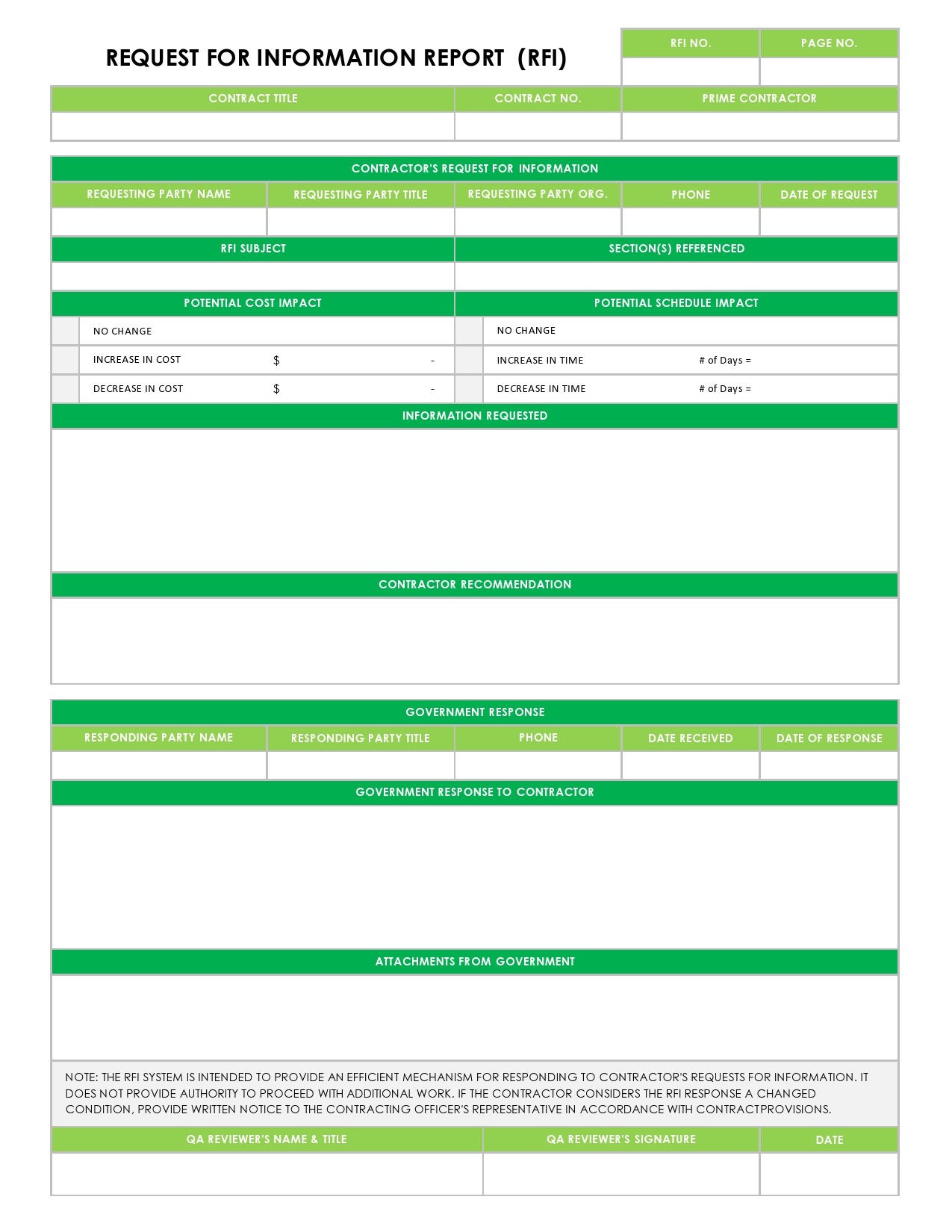Leveraging these pre-designed forms streamlines the procurement process, saving time and resources for both requesters and vendors. Consistent data collection facilitates informed decision-making and allows for objective evaluation of potential solutions. Clear communication reduces the likelihood of misunderstandings and promotes a more efficient exchange of information, ultimately leading to better vendor selection.

This foundation of understanding paves the way for a deeper exploration of the key components within these documents, their practical applications, and best practices for their effective utilization.
Key Components of an Information Request Form
Well-structured information request forms contain essential elements that ensure clarity and completeness. These components facilitate a streamlined information exchange between requesting organizations and potential suppliers.
1. Introduction and Purpose: This section outlines the requesting organization and the overall objective of the information request. It sets the context for the vendors and clarifies the intended use of the information provided.
2. Company Background: Information about the requesting organization, including its industry, size, and relevant details about the project or initiative driving the request, provides vendors with context for tailoring their responses.
3. Scope of Work/Project Description: A clear and concise description of the project or need helps vendors determine their ability to meet the requirements. This section may include specific challenges, objectives, or desired outcomes.
4. Specific Information Requested: This section contains the detailed questions or information requirements. Clear, specific questions elicit more relevant and useful responses from potential suppliers.
5. Submission Instructions: Clear instructions on how and when to submit responses, including required formats and contact information, are essential for managing the process effectively.
6. Timeline: Including key dates, such as deadlines for questions and submission of responses, ensures all parties are aligned and expectations are managed.
7. Contact Information: Providing contact information for inquiries ensures vendors can seek clarification or address any questions they may have, leading to more complete and accurate responses.
These components work together to provide a structured framework for efficient information gathering, enabling informed decision-making and ultimately contributing to successful project outcomes. A complete and well-defined form minimizes ambiguity and maximizes the value of the responses received.
How to Create an Information Request Form
Developing a comprehensive information request form requires careful planning and attention to detail. A well-structured form facilitates the efficient collection of relevant information from potential suppliers, enabling informed decision-making.
1. Define Objectives: Clearly articulate the goals of the information request. Understanding the desired outcomes guides the development of specific questions and ensures the collected information aligns with project needs.
2. Identify Potential Suppliers: Determine the target audience for the information request. Researching and identifying potential suppliers ensures the request reaches relevant vendors.
3. Develop Clear Questions: Craft specific, concise questions that elicit the required information. Avoid ambiguity and ensure questions directly address key areas of interest.
4. Structure the Form Logically: Organize the form into sections with clear headings and subheadings. A logical structure facilitates easy navigation and comprehension for both the requester and the respondents.
5. Establish a Timeline: Define key dates, including deadlines for questions and submission of responses. A clear timeline manages expectations and ensures a timely response process.
6. Provide Clear Instructions: Include detailed instructions for completing and submitting the form. Specify preferred formats, contact information, and any other relevant guidelines.
7. Review and Refine: Before distributing the form, thoroughly review it for clarity, completeness, and accuracy. Internal review helps identify and correct any potential issues.
8. Distribute the Form: Distribute the form to identified potential suppliers through appropriate channels. Ensure all recipients receive the necessary information and instructions.
A methodical approach to creating an information request form, incorporating these key steps, leads to a more efficient and effective procurement process. Well-defined objectives, clear questions, and a structured format contribute to the collection of valuable information, ultimately supporting informed decision-making and successful project outcomes.
Standardized information request forms provide a crucial framework for efficient and effective communication in the procurement process. From clarifying project scope and requirements to streamlining vendor responses, these documents serve as a cornerstone for informed decision-making. Understanding the key components, development process, and best practices for utilization ensures that these forms maximize their potential to gather relevant information and contribute to successful project outcomes.
Organizations seeking to optimize vendor selection and project success should prioritize the development and implementation of well-structured, comprehensive information request forms. The effective use of these tools represents a significant step towards streamlining procurement processes, mitigating risks, and ultimately achieving project objectives.
